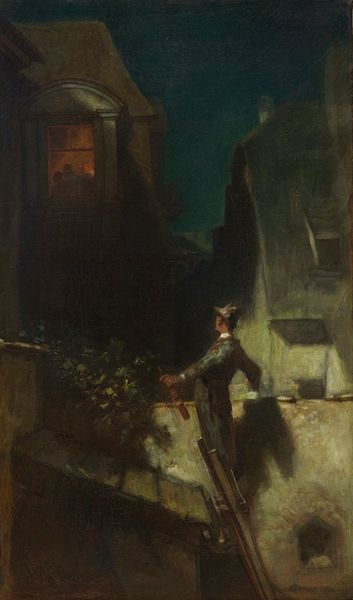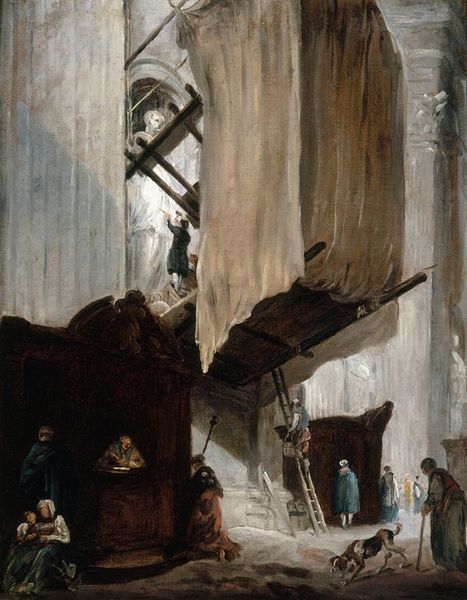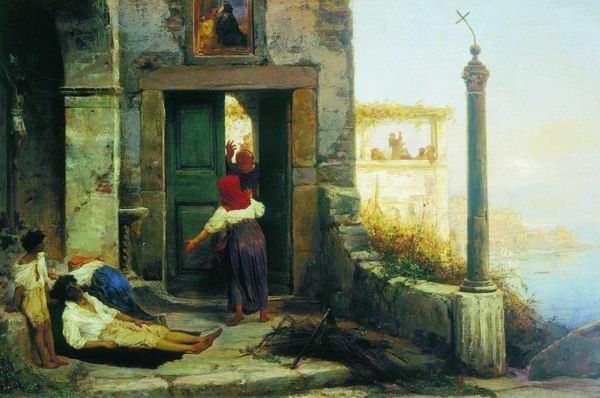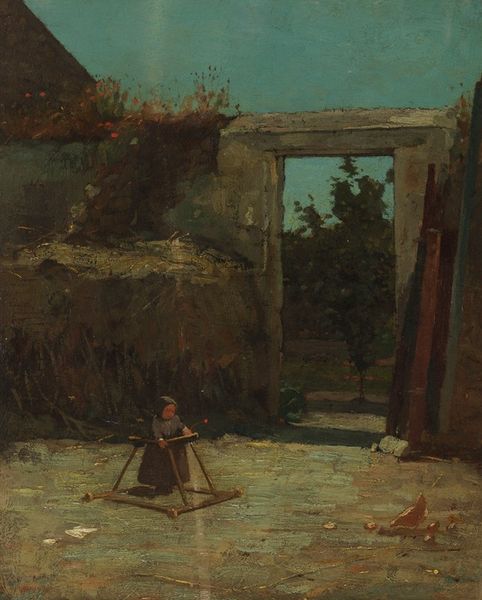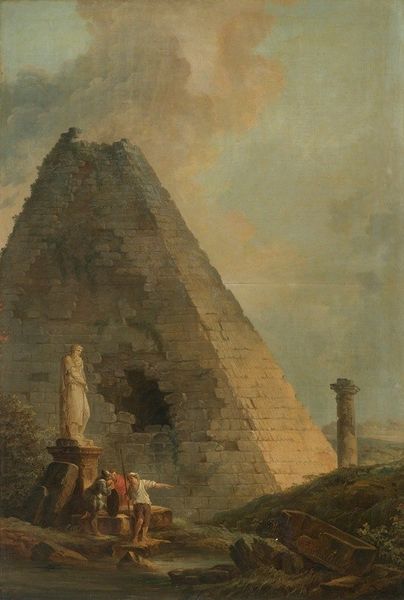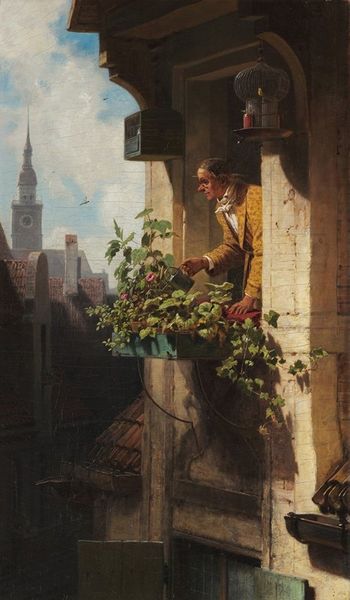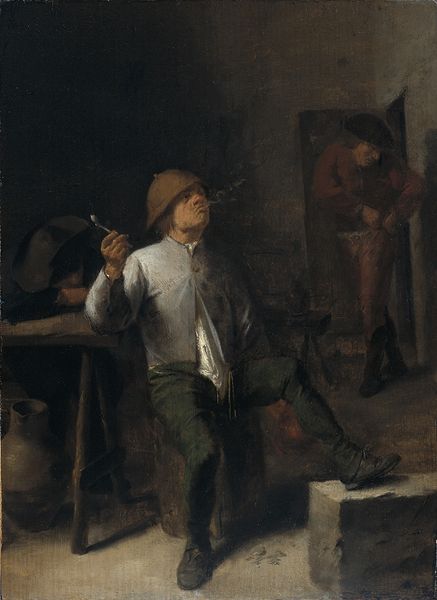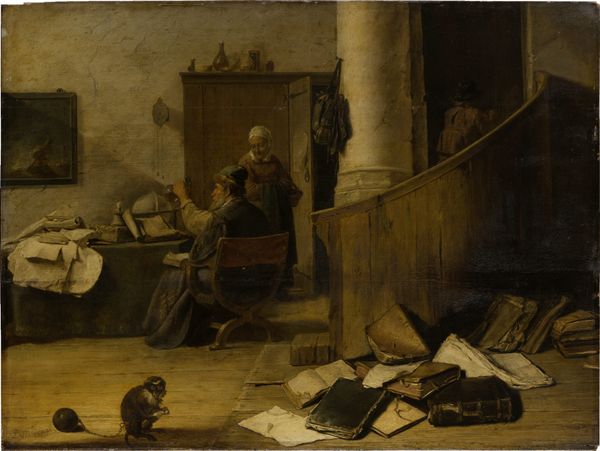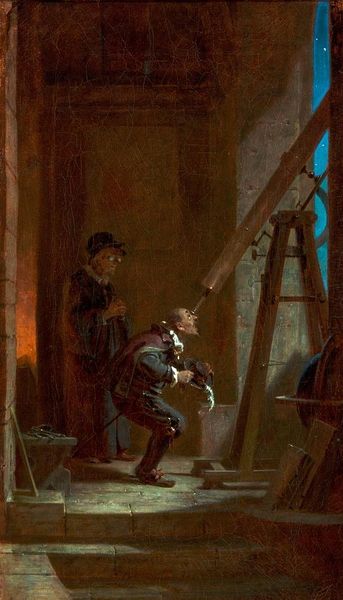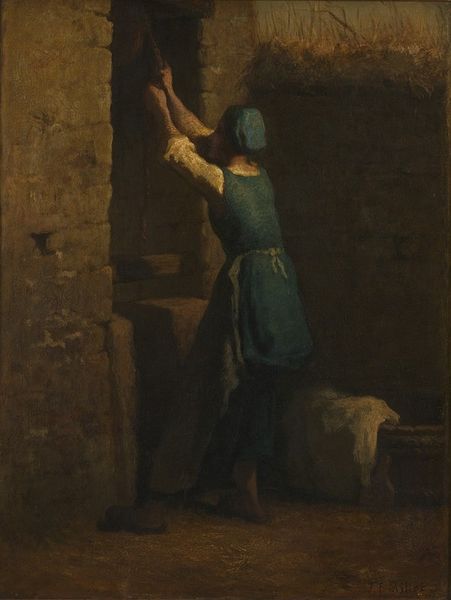
Copyright: Public Domain: Artvee
Editor: Here we have Carl Spitzweg's "Ständchen," created in 1854 using oil paint. It's immediately striking how the artist has positioned the serenading musician precariously on a rooftop, almost silhouetted against the hazy sky. What do you see in this piece from a formal perspective? Curator: Indeed. Observe how Spitzweg uses contrasting textures to delineate the visual space. The rough brickwork of the building contrasts with the soft atmospheric sky. Semiotically, we can examine how color and light function. The darker, earthy tones of the architecture are grounded, while the ethereal blues above evoke a sense of longing. What meaning do you derive from this arrangement? Editor: It feels almost dreamlike. The rooftop location creates a sense of separation from the everyday. But the very fact he's there on the rooftop calls attention to his precarious situation as a working-class figure in an urbanized, rapidly changing setting. Curator: Precisely! Further analysis reveals Spitzweg’s mastery in composing with line and form. The diagonal of the ladder bisects the verticality of the architecture, guiding the eye toward the figure with the violin. Are you considering his use of diagonal line and asymmetry within this structured composition? Editor: Now that you point it out, yes! The artist uses that tension in the diagonals and asymmetry, balancing it with a tranquil color palette that makes for an evocative piece that invites contemplation of longing, romantic yearning, and the interplay between isolation and connection. Curator: Precisely. Thinking of his composition in terms of binary oppositions enriches the way we grasp Spitzweg's Romantic sentiment. It all reflects not just the artist's observation, but an emotional resonance achieved through formal methods. Editor: Thanks for helping me look more closely; considering the artist's conscious structuring adds another layer of depth to this artwork.
Comments
No comments
Be the first to comment and join the conversation on the ultimate creative platform.
